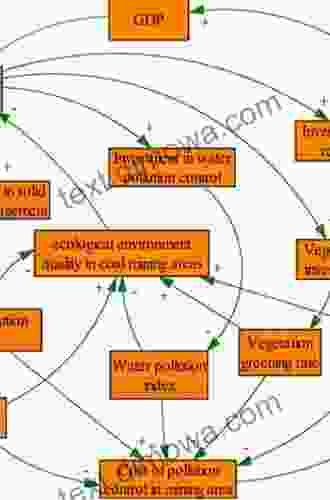Unlocking the Power of Causation: A Comprehensive Guide to Inference and Intervention Causal Models for Business Analysis

In the dynamic and ever-evolving business landscape, understanding and harnessing the power of causation is crucial for informed decision-making and achieving strategic success. Inference and intervention causal models offer invaluable tools to uncover hidden relationships, identify actionable insights, and ultimately drive profitable outcomes. This comprehensive article delves into the intricacies of causal modeling, its applications in business analysis, and the groundbreaking insights it empowers analysts to uncover.
What are Causal Models?
Causal models are graphical representations of the relationships between variables, explicitly depicting the cause-and-effect dynamics within a system. They allow analysts to visualize the conditional dependencies and directional influences among different factors, providing a structured framework for understanding complex business processes. Two primary types of causal models exist:
5 out of 5
| Language | : | English |
| Paperback | : | 69 pages |
| Item Weight | : | 6.7 ounces |
| Dimensions | : | 7 x 0.18 x 10 inches |
| File size | : | 5147 KB |
| Text-to-Speech | : | Enabled |
| Screen Reader | : | Supported |
| Enhanced typesetting | : | Enabled |
| Word Wise | : | Enabled |
| Print length | : | 282 pages |
a) Inference Causal Models
Inference causal models aim to infer the causal relationships between variables using observational data. They employ statistical techniques, such as regression analysis and structural equation modeling, to estimate the strength and direction of the hypothesized causal paths. By leveraging observational data, inference causal models provide valuable insights into existing business practices and their impact on key performance indicators (KPIs).
b) Intervention Causal Models
Intervention causal models go a step further, allowing analysts to actively manipulate variables and observe the resulting changes. By performing controlled experiments or A/B testing, intervention causal models establish a direct link between an intervention and the subsequent outcome, providing robust evidence of causal relationships.
Benefits of Causal Modeling in Business Analysis
The incorporation of causal modeling into business analysis offers a multitude of benefits, empowering analysts with:
a) Deepened Understanding of Business Processes
Causal models provide a visual representation of the underlying mechanisms driving business outcomes. They help analysts identify the critical factors influencing KPIs, enabling a thorough understanding of the complex dynamics within an organization.
b) Improved Decision-Making
By uncovering the causal relationships between variables, causal models facilitate informed decision-making. Analysts can simulate different scenarios and evaluate their potential impact, allowing them to make strategic choices backed by solid evidence.
c) Enhanced Predictive Accuracy
Causal models enable analysts to predict future outcomes more accurately. By capturing the causal structure of a system, they can forecast the likely consequences of specific interventions or changes in external factors.
d) Identification of Root Causes
Causal models help analysts pinpoint the root causes of observed problems or performance gaps. By tracing the causal paths, they can identify the underlying factors that need to be addressed to bring about meaningful improvements.
Applications of Causal Modeling in Business Analysis
Causal modeling finds wide-ranging applications in business analysis, including:
a) Marketing Optimization
Causal models can optimize marketing campaigns by identifying the factors that drive customer behavior and conversion rates. They help marketers understand the impact of different touchpoints, messaging, and targeting strategies on sales and brand loyalty.
b) Product Development
Causal models aid in product development by quantifying the relationship between product features and customer satisfaction or product adoption. They provide insights into the optimal combination of features and the potential impact of new product s.
c) Risk Management
Causal models are invaluable for risk assessment and mitigation. They help analysts identify the factors that contribute to potential risks and develop strategies to minimize their likelihood and impact.
d) Supply Chain Optimization
Causal models can optimize supply chains by uncovering the causal relationships between supplier performance, inventory levels, and customer lead times. They enable analysts to identify bottlenecks and improve overall efficiency.
Case Study: Uncovering the Factors Driving Customer Churn
To illustrate the power of causal modeling in business analysis, consider the following case study:
A subscription-based streaming service witnessed a concerning increase in customer churn. To identify the root causes and develop effective retention strategies, they employed an inference causal model. The model revealed that customer satisfaction, perceived value, and ease of use played significant roles in influencing churn behavior. Based on these insights, the streaming service implemented targeted interventions to enhance customer satisfaction and simplify the user experience. The results were substantial, leading to a significant reduction in churn rates and improved profitability.
Inference and intervention causal models empower business analysts to understand complex relationships, identify actionable insights, and make informed decisions. By harnessing the power of causation, analysts can uncover hidden drivers, predict future outcomes, and develop targeted strategies that drive business success. The incorporation of causal modeling into business analysis is a transformative step towards maximizing performance and achieving long-term competitiveness.
5 out of 5
| Language | : | English |
| Paperback | : | 69 pages |
| Item Weight | : | 6.7 ounces |
| Dimensions | : | 7 x 0.18 x 10 inches |
| File size | : | 5147 KB |
| Text-to-Speech | : | Enabled |
| Screen Reader | : | Supported |
| Enhanced typesetting | : | Enabled |
| Word Wise | : | Enabled |
| Print length | : | 282 pages |
Do you want to contribute by writing guest posts on this blog?
Please contact us and send us a resume of previous articles that you have written.
 Book
Book Novel
Novel Page
Page Chapter
Chapter Text
Text Story
Story Genre
Genre Reader
Reader Library
Library Paperback
Paperback E-book
E-book Magazine
Magazine Newspaper
Newspaper Paragraph
Paragraph Sentence
Sentence Bookmark
Bookmark Shelf
Shelf Glossary
Glossary Bibliography
Bibliography Foreword
Foreword Preface
Preface Synopsis
Synopsis Annotation
Annotation Footnote
Footnote Manuscript
Manuscript Scroll
Scroll Codex
Codex Tome
Tome Bestseller
Bestseller Classics
Classics Library card
Library card Narrative
Narrative Biography
Biography Autobiography
Autobiography Memoir
Memoir Reference
Reference Encyclopedia
Encyclopedia Nkechi Anya
Nkechi Anya Matt Andrzejewski
Matt Andrzejewski Mary B Moore
Mary B Moore Natalie Murray
Natalie Murray Mark Willenbrock
Mark Willenbrock Tiffany Forbes
Tiffany Forbes Mayank Kejriwal
Mayank Kejriwal Peggy Caravantes
Peggy Caravantes Mary Macleod Rivett
Mary Macleod Rivett Mark Thomas
Mark Thomas Marlene Perez
Marlene Perez Susan J Buck
Susan J Buck Roger K Daneth
Roger K Daneth Mark Joseph Rankin
Mark Joseph Rankin Momtaz Begum Hossain
Momtaz Begum Hossain Michael Harris
Michael Harris Melissa F Miller
Melissa F Miller Matthew C Le Merle
Matthew C Le Merle Xavier Navarro Aquino
Xavier Navarro Aquino Melanie Wilber
Melanie Wilber
Light bulbAdvertise smarter! Our strategic ad space ensures maximum exposure. Reserve your spot today!

 Nikolai GogolDelve into the Shadowy Realm of 'The Dirty Way To Destroy The Goddess Heroes'
Nikolai GogolDelve into the Shadowy Realm of 'The Dirty Way To Destroy The Goddess Heroes'
 Percy Bysshe ShelleyUnraveling the Historical Epic: SparkNotes Literature Guide to Julius Caesar
Percy Bysshe ShelleyUnraveling the Historical Epic: SparkNotes Literature Guide to Julius Caesar
 Alvin BellLocal Bifurcations Center Manifolds And Normal Forms In Infinite Dimensional:...
Alvin BellLocal Bifurcations Center Manifolds And Normal Forms In Infinite Dimensional:... Pat MitchellFollow ·17.2k
Pat MitchellFollow ·17.2k Thomas MannFollow ·2.8k
Thomas MannFollow ·2.8k Neil GaimanFollow ·11.7k
Neil GaimanFollow ·11.7k Vernon BlairFollow ·11.2k
Vernon BlairFollow ·11.2k Mario Vargas LlosaFollow ·13.8k
Mario Vargas LlosaFollow ·13.8k William PowellFollow ·3.6k
William PowellFollow ·3.6k Clay PowellFollow ·16k
Clay PowellFollow ·16k Norman ButlerFollow ·15.3k
Norman ButlerFollow ·15.3k

 Boris Pasternak
Boris PasternakThree Walking: An Immersive Journey into the Heart of...
Immerse yourself in the...

 Connor Mitchell
Connor MitchellUnveiling the Secrets of Archery: Discover "Learnt It...
Archery, an...

 Craig Blair
Craig BlairUnveiling the Secrets of Success: Arrogance Millz Day
Are you ready to unlock...

 Damon Hayes
Damon HayesThe Diary and Letters of America's Minister to France...
In the year 1870, as the...

 Hector Blair
Hector BlairCapoeira: A Journey Through History, Culture, and the...
Origins and...
5 out of 5
| Language | : | English |
| Paperback | : | 69 pages |
| Item Weight | : | 6.7 ounces |
| Dimensions | : | 7 x 0.18 x 10 inches |
| File size | : | 5147 KB |
| Text-to-Speech | : | Enabled |
| Screen Reader | : | Supported |
| Enhanced typesetting | : | Enabled |
| Word Wise | : | Enabled |
| Print length | : | 282 pages |








